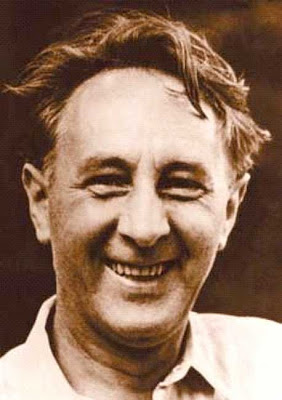 WEST PALM BEACH — The Palm Beach Chamber Music Festival, which has been sweetening the sweltering summers hereabouts with music since 1992, is notable above all for two things:
WEST PALM BEACH — The Palm Beach Chamber Music Festival, which has been sweetening the sweltering summers hereabouts with music since 1992, is notable above all for two things:
Its showcasing of the individual instrumentalists whom local audiences normally hear only as part of the area’s various symphonic and operatic ensembles, and second, its attitude of discovery. Year after year, the organizers of the festival have found overlooked, forgotten or just plain neglected gems from the vast repertoire of chamber music and presented them in a winning spirit of shared investigation and loving attention.
The festival opened its 18th season Friday night at the Persson Recital Hall on the campus of Palm Beach Atlantic University in a manner consistent with that approach, presenting four remarkable pieces that demonstrated how much worthy music is out there if you take the time to seek it out. The performances, too, were at a very high level for the most part, though there were some rough edges that hopefully will smooth themselves out by Sunday afternoon.
The biggest and best-known work on the bill was the closer, the Serenade for Winds (in D minor, Op. 44) of Antonin Dvorak, though this piece is also quite little-known even to those who are well-acquainted with the Czech master’s more celebrated symphonies and concerti, or even his lovely Serenade for Strings. But the Wind Serenade is a masterwork, and the 12 players on stage played it with gusto — sometimes, too much of it.
The festival musicians played the Dvorak without a conductor, no mean feat with a dozen people, and entrances and exits, even the shared ritard before the recap of the opening theme in the first movement, were crisp and clean. Each of the serenade’s four movements were interpreted with good fidelity to Dvorak’s style, which marries the vigor of Czech folk music to the melodic power of Schubert.
But there was a strong sense of overblowing throughout the Serenade, with too much all-out attack and not enough subtlety and shade. In the second movement, the trio (a furiant) was beautifully handled, but the minuet (a souzedska) was a bit too loud, too forced and pushed, which masked its gentleness and obscured the contrast with the furiant.
The third movement, a slow-but-pulsing exercise in harmonic tension and motifs rather than tunes, is therefore harder to bring off, and here again things were played too forcefully, with not enough attention to the softer side of the dynamic ledger. There was, though, exceptional first-horn playing from Ellen Tomasiewicz, whose work gave the movement all the Romantic richness its composer sought.
The heritage of Dvorak could be heard, or in this case foreshadowed, in another Czech piece played earlier in the concert, the Serenade (H. 334) for two clarinets and string trio, written in 1951 by Bohuslav Martinu. This is a marvelous piece, filled with jazzy rhythms and striking tone colors that range from dark and disturbed to bubbly and radiant.
The quintet gave it a fine reading, making the most of Martinu’s somewhat oddball scoring, which calls for the two clarinets (Michael Forte and Scott Ellington) to play as a pair most of the time, and singles out the viola (Rene Reder) as a frequent soloist. The three played admirably well, and all five (the others were violinist Dina Kostic and cellist Susan Moyer Bergeron) were particularly good in the middle of the third movement, a tricky, swift excursion into a world of glimmer and fire.
For unusual scoring it would be hard to beat a trio of bassoons, but there they were at the beginning of the second half, in the Divertissements of the French composer Eugene Bozza, known primarily today for his wind music. Bassoonists Michael Ellert, Matthew Corey and Fernando Traba played this charming three-movement piece with big, broad strokes, luxuriating in the dark but sensuous sounds three bassoons can raise.
Bozza’s piece has almost nothing of the cartoon-comic in it, opening with a long-breathed, elegant melody traded in canonic fashion among the three instruments, followed by a somber, almost severe slow movement and a clever third that sparkled rather than guffawed. The audience still giggled between movements, but chalk that up to Bugs Bunny rather than Bozza or the three players, particularly Traba, whose rich, fat sound was most impressive.
The concert opened with the six-movement Serenade for flute, violin and viola of Beethoven (in D, Op. 25). Flutist Karen Dixon (one of the festival’s co-founders along with Forte and Ellert) gave this early work an excellent spin, showing off an ability to play round, even notes with no trace of breathiness from the bottom to the top of the register. Violinist Mei-Mei Luo played with as much presence as Dixon, with violist Reder taking more of a supporting role.
Dixon was especially good in the first variation of the fourth movement, which calls for plenty of dazzle, and the strength of all three as an ensemble could be gauged in the D minor section of the second-movement Minuet, which had drama and passion to spare. First-period Beethoven though it is, this is a difficult but imaginative piece that needs fine musicians such as these three to leave the correct lasting impression, that of music with plenty of charm but too much bold invention to serve only as background music.
The first concert of the Palm Beach Chamber Music Festival 2009 will be repeated tonight at 8 p.m. at the Eissey Campus Theatre at Palm Beach Community College in Palm Beach Gardens, and at 2 p.m. Sunday in the Crest Theatre at Old School Square in Delray Beach. Tickets are $21, with a four-concert subscription available for $72. For more information, call 800-330-6874 or visit www.pbcmf.org.